- Home
- Knowledge library
- Less-common claw horn lesions in cows
Less-common claw horn lesions in cows
Find out how to manage, prevent and treat less-common lesions in lame cows.
Back to: Lesions of cows’ feet
Success factors
Treating the following lesions rely on differing combinations of all four success factors.
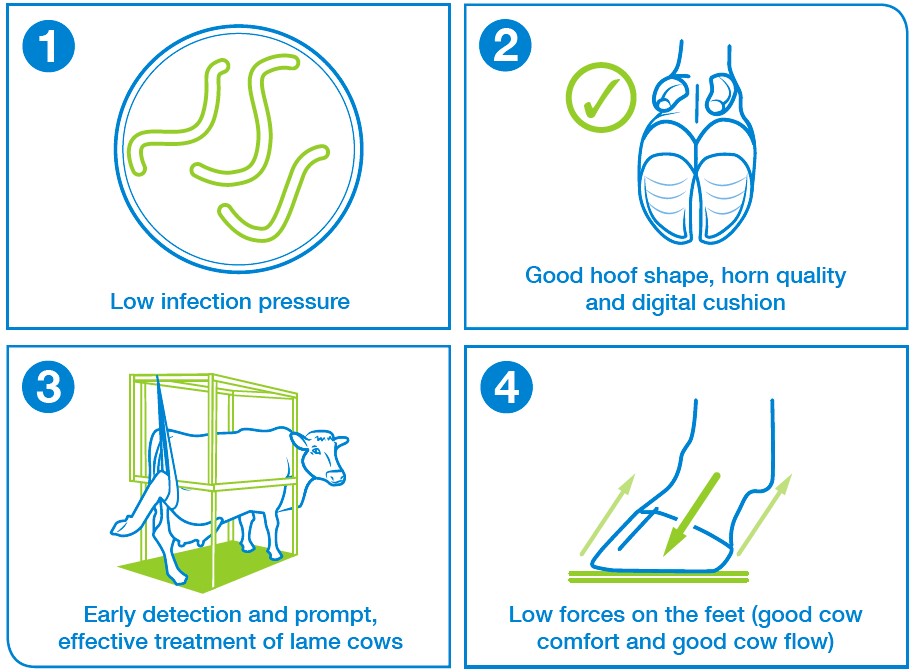
Any lesion caused by an infectious agent could spread on contaminated equipment from cow to cow. It is therefore important that this equipment is properly disinfected.
Remember, your vet is there to support you, particularly in difficult cases – always consult them if you are unsure.
Toe necrosis (TN)
Description
- ‘Rotten toe’
- May start as toe ulcer or split wall, with deep infection often involving bone
- DD bacteria may be involved, infecting exposed corium and preventing healing
Typical risks
- May follow a toe ulcer which has become infected
Associated success factors: 2, 3 and 4 - Secondary infection includes DD bacteria (more typical on farms with uncontrolled DD)
Associated success factors: 1 - Many of these lesions are associated with split inner hoof walls; DD may be the primary cause of necrotic toes or a secondary invader, after a toe ulcer
Associated success factors: 1 and 3 - Too slow at detecting and treating early lesions, particularly DD (at the front of the hoof)
Associated success factors: 3
Toe necrosis can be a difficult condition and may need to be treated by a vet.
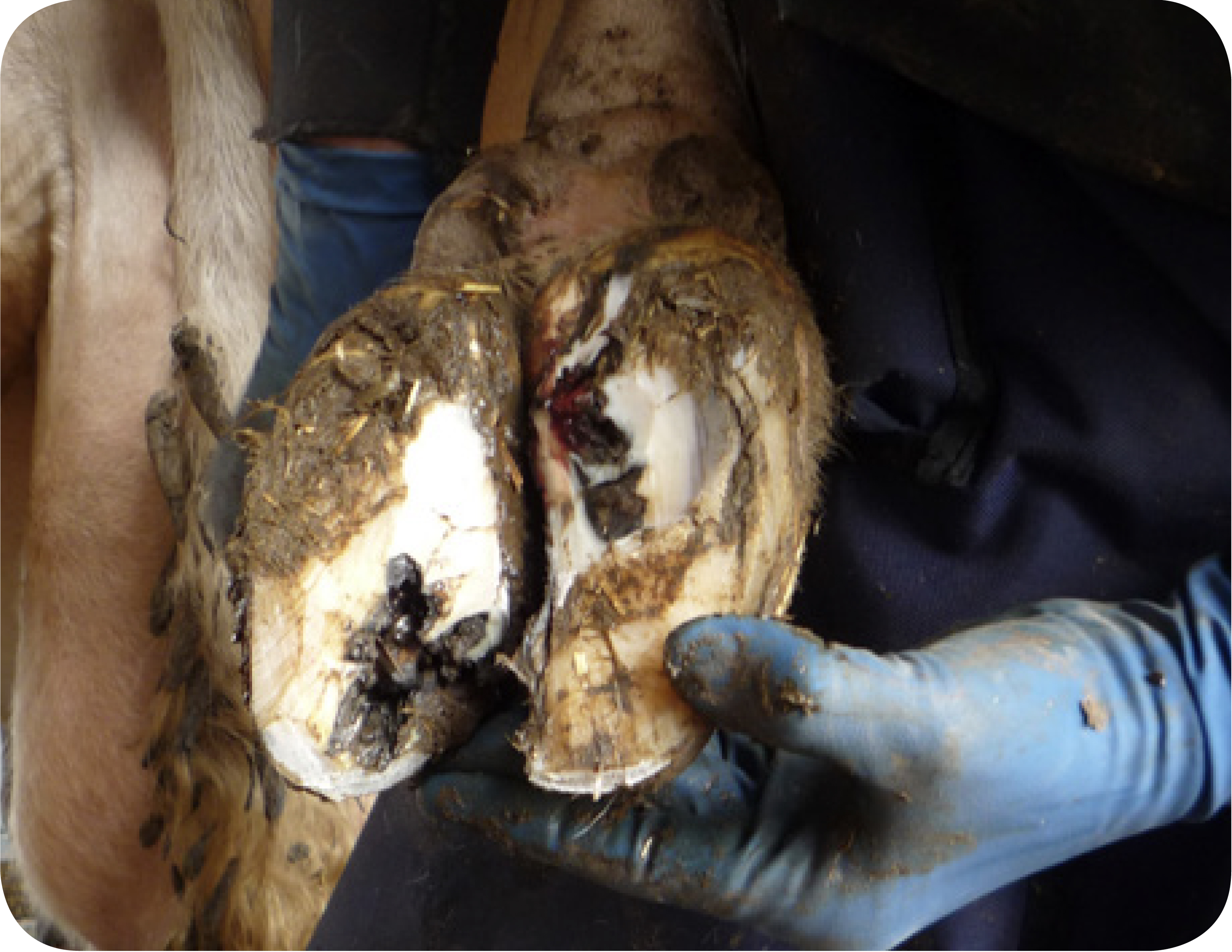
Toe ulcer (TU)
Description
- Ulcer located at the toe
- Particularly painful
- Often precipitated by thin soles
Typical risks
- Thin soles: whether from over-trimming, long tracks, poor tracks, poor cow flow, new concrete, wet (soft) feet or rough surfaces
Associated success factors: 2 and 4 - Stony ground: stones can cause a point force on bottom of sole which affects sole corium (particularly if sole horn is thin: grazing herds)
Associated success factors: 4
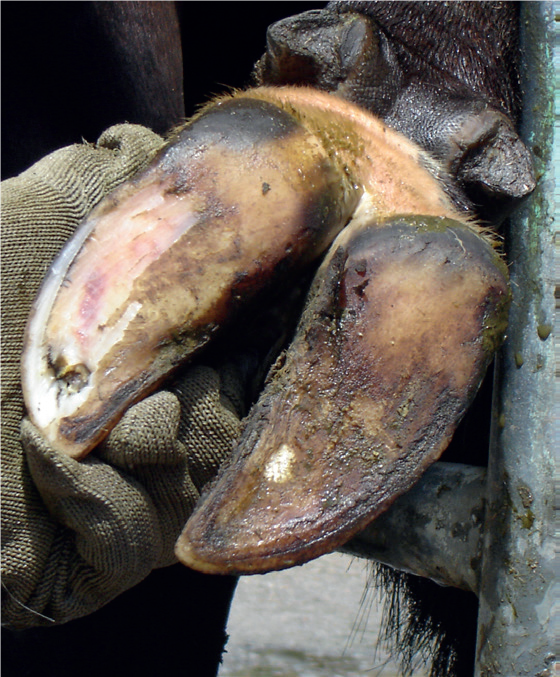
Bulb ulcer/Heel ulcer (BU)
Description
- Ulcer further back on the foot than a typical sole ulcer
- Sometimes tracks back to heel
Typical risks
- The risks are likely to be similar as for sole ulcers, but it is less well understood why some herds seem to suffer the ulcer lesions in this location
Associated success factors: 2 and 4
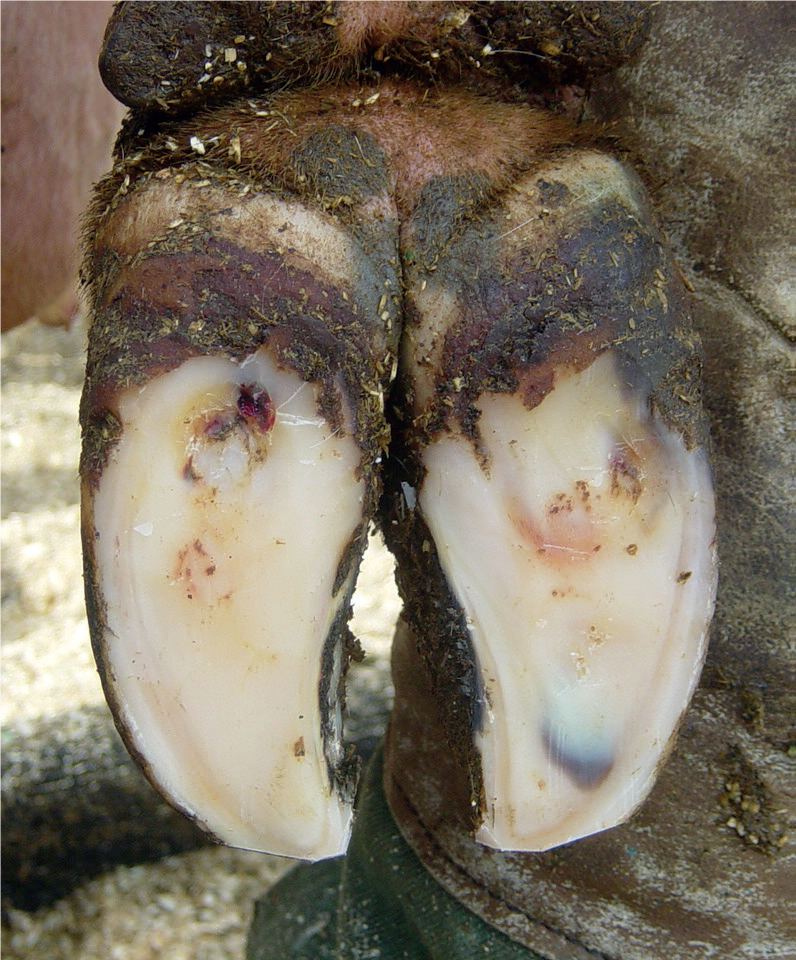
Axial horn fissure (AHF)
Description
- Appears as a white-line defect on the inner wall
- Vertical crack in the inner claw wall
- Sometimes hard to spot
Typical risks
- Poor grip on floors; sharp turns; overcrowding and dead-end passages, bulling cows, no loafing area
Associated success factors: 4 - Rushing along tracks; pressure during herding and rough use of backing gate; poor cow flow in collection yard
Associated success factors: 4 - Poor tracks: wet, stony ground; long distances and long standing times
Associated success factors: 4 - Rough concrete; new concrete (due to being rough, but also chemical horn damage)
Associated success factors: 4 and 2 - Poor acclimatisation to concrete floors
Associated success factors: 2
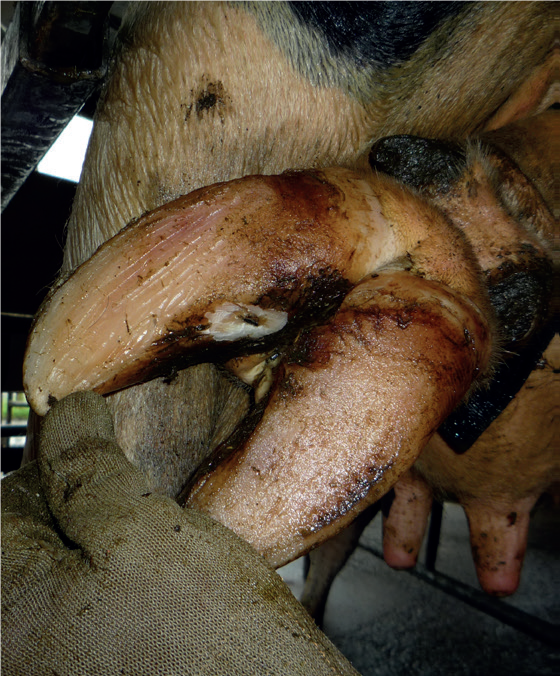
Foreign body
Description
- Sharp stones or other objects
- Do not confuse with stones getting stuck in sole ulcer sites
Typical risks
- Caused by penetration of sole by sharp objects, including stones, roof tacks, screws; more likely with soft sole horn (wet feet); thin soles (over-trimming or over-wear); recent building works; poor choice of walking surface (e.g. road planings)
Associated success factors: 3 and 4
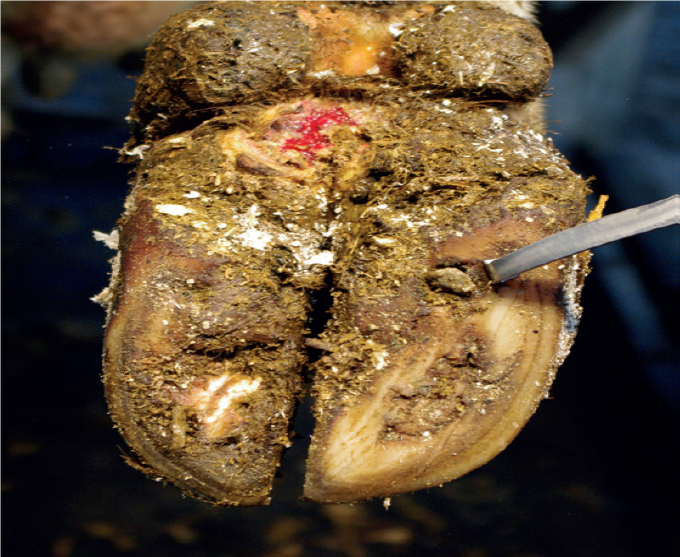
Useful links
Lameness in cows: when to involve the vet
Lesion recognition and trouble shooter guide
If you would like to order a hard copy of the Lesion recognition and trouble shooter guide, please contact publications@ahdb.org.uk or call 0247 799 0069.

